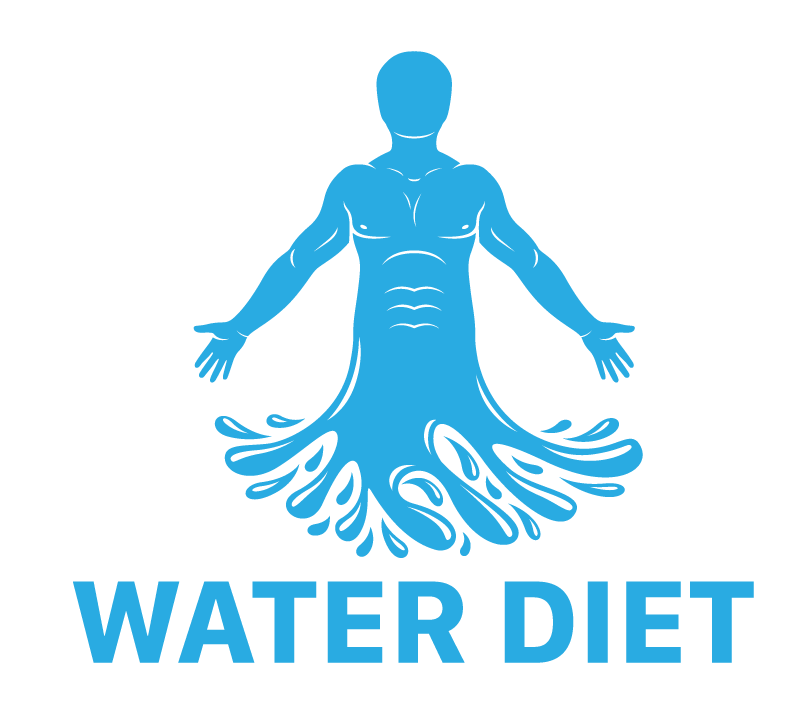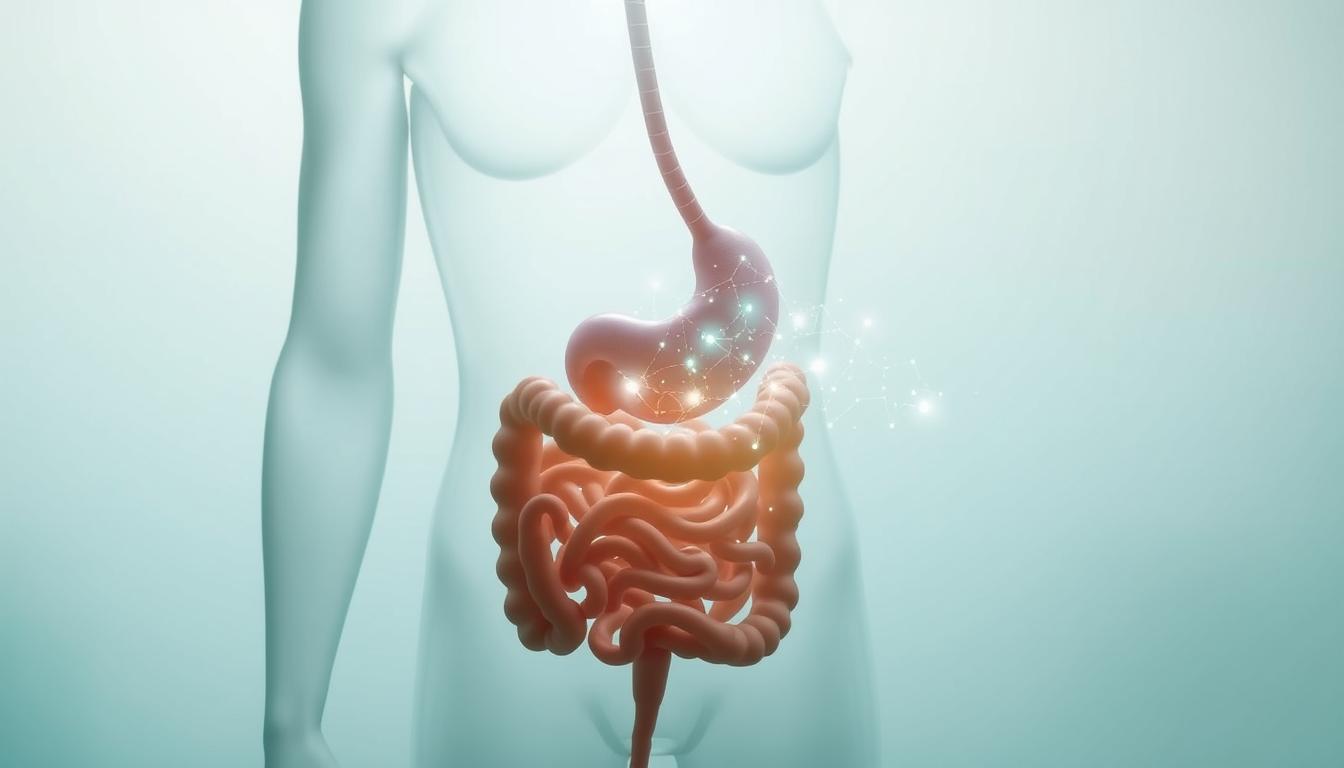Combining water fasting benefits with intermittent fasting is becoming more popular for health improvement. This duo uses water-only fasting with fasting windows to help with weight loss and better health. It lets people use their metabolism to create a fasting plan that fits their life and goals.
The mix of water fasting and intermittent fasting is backed by science and advice. When done right, it makes metabolism more flexible, helps with digestion, and increases energy. This leads to better health over time.
Key Takeaways
- Combining water fasting with intermittent fasting can enhance overall health.
- This duo approach leverages the benefits of both methods for sustainable weight loss.
- Fasting methods should be personalized to individual metabolic responses.
- Scientific research supports the health benefits of combining fasting techniques.
- Optimizing digestion and energy levels are key advantages of this duo.
The Basics of Water Fasting
Understanding water fasting is key for those looking to improve their health and manage weight. We’ll explore the water fasting definition, its fasting process, benefits, risks, and how long it should last.
Definition and Process
Water fasting means not eating any food and only drinking water for a certain time. This fasting process makes the body use stored fat for energy. It can lead to better metabolic health and help with weight loss.
Benefits and Risks
Water fasting has many benefits like improving metabolic health and detoxifying the body. It can also help with fasting for weight loss. But, it’s not without risks. Not getting enough nutrients and fasting for too long can be harmful. Always talk to a doctor before starting a water fasting plan.
Recommended Duration
Experts suggest short water fasts, usually 24 hours to three days. This length is safe and can lead to positive metabolic changes. Longer fasts, up to a week, are possible but should be done with care and a doctor’s advice.
Following these guidelines for water fasting can be safe and effective. Mixing it with other diets, like intermittent fasting, can make it even more beneficial. This ensures a lasting approach to health and wellness.
The Principles of Intermittent Fasting
Intermittent fasting is a popular way to lose weight and improve health. Let’s explore some of the main methods, health perks, and common myths. This will help you get a better grasp of its principles.
Popular Methods
There are many fasting schedules for intermittent fasting, each suited for different lifestyles:
- 16/8 Method: This means fasting for 16 hours and eating during an 8-hour window.
- 5:2 Diet: Eat normally for five days and cut calories to 500-600 kcal on the other two days.
- Alternate-Day Fasting: Switch between days of normal eating and days of fasting or very low calories.
- 24-Hour Fasting: Fast for a full 24 hours once or twice a week.
Health Benefits
One key benefit of intermittent fasting is metabolic flexibility. It helps your body switch between burning fats and sugars efficiently. Studies show that intermittent fasting can:
- Reduce inflammation and lower the risk of diseases related to it.
- Lower blood sugar by up to 6% and insulin by as much as 31%.
- Improve how your body breaks down sugar.
- Support autophagy, which can reduce allergic reactions and food intolerances.
- Help your heart by lowering blood pressure and reducing cholesterol and fat in the blood.
- Boost the immune system, making you more immune.
Common Misconceptions
Many people misunderstand intermittent fasting. They think it’s just about eating very little, but it’s not. It’s about when you eat, not what or how much. It’s a way to make your body use energy better and improve metabolic flexibility.
Fasting isn’t the same as starving. It’s a planned way to eat that fits your life. It’s a good way to manage weight and improve health.
Here’s a table that shows the intermittent fasting benefits for different fasting schedules:
| Fasting Method | Duration | Benefits |
|---|---|---|
| 16/8 Method | 16 hours fasting, 8 hours eating | Improves insulin sensitivity, weight loss |
| 5:2 Diet | 5 days normal, 2 days restricted calorie intake | Promotes autophagy, reduces inflammation |
| Alternate-Day Fasting | Every other day fasting | Enhances metabolic flexibility, heart health |
| 24-Hour Fasting | Full day fasting once or twice a week | Supports immune regeneration, weight management |
Combining Water Fasting with Intermittent Fasting: A Powerful Duo
Combining water fasting with intermittent fasting is a game-changer. This mix can lead to faster fat loss and better metabolic health. Health and Wellbeing Coach Vera Bokor says this combo boosts both fasting methods.
Water fasting with intermittent fasting can make fasting more effective. Experts say it’s key to adjust these methods to fit your body’s needs. Personalized schedules are crucial for the best results and safety. For more on how these methods work together, check out the benefits of combining fasting techniques.
Start by eating meals full of healthy fats, proteins, and veggies before fasting. This helps you feel full and satisfied during the fast. Good meals to eat after fasting include:
- Steak with BBQ zucchini and tomatoes
- Salmon with spinach and cream sauce
- Fried halloumi with Greek salad
Eating a variety of colorful veggies, proteins, and fats is key. It helps refill your body with nutrients and makes meals more enjoyable. A good first meal after fasting is a light salad with olive oil, sweet potato, and shrimp.
For Optimal health practices, follow these dietary tips:
- Choose whole, unprocessed foods
- Incorporate a variety of colorful vegetables
- Select diverse protein sources
- Include healthy fats
- Limit refined products
- Use different spices and condiments
Avoid foods high in carbs, like cereals and fries, after fasting. These can make your body more sensitive to insulin. Eating healthy with fasting can speed up your results more than old eating habits.
Exercising while fasting can burn up to 20% more fat than exercising without fasting. Fasting also helps reduce insulin resistance, which lowers the risk of metabolic diseases. If you’re thinking about trying these Optimal health practices, follow expert advice and tailor your nutrition to your needs.
Health Benefits of the Duo Approach
Water fasting and intermittent fasting together create a strong combo that boosts health. This mix uses the best parts of both to improve fat burning, insulin use, and reduce inflammation. These effects help with weight control and better health over time.

Popular fasting methods like the 16/8 and 5:2 plans are great on their own. But when mixed with water fasting, they work even better. This mix boosts autophagy, which cleans out old cells and makes new, healthy ones.
“Combining water fasting with intermittent fasting can offer synergistic health effects that go beyond the benefits of either method alone.”
This combo not only helps cells repair but also balances hormones and improves brain function. It also boosts mental clarity and strengthens the immune system. This makes it a complete plan for staying healthy.
Adding exercise to this fasting plan can make things even better. Different exercises like cardio, strength training, and flexibility help with muscle growth, heart health, and mental well-being.
To get the most out of this, plan your eating around workouts and pay attention to your body. This way, you avoid eating too much or too little. Doing it right can lead to great health for your body and mind.
Comparing Different Fasting Methods
Looking at various intermittent fasting methods shows how each one differs in ease and effectiveness. We’ll look at the 16/8 method, the 5:2 diet, alternate-day fasting, and the 24-hour fasting approach. We’ll see how they help with metabolic health.
16/8 Method
The 16/8 method means fasting for 16 hours and eating for 8 hours. It matches our body’s natural sleep-wake cycle, making it a favorite. Many find it easy to stick with, helping with weight and metabolic health.
5:2 Diet
In the 5:2 diet, you eat normally for five days and eat very little on the other two days. This way, you get fasting benefits without fasting every day. It’s easier for some to follow, still helping with metabolism.
Alternate-Day Fasting
This method switches between normal eating days and days with fewer calories, usually 500 calories. It can be tough because of the changing eating patterns. But, it’s good for metabolic health and can lower inflammation.
24-Hour Fasting
The 24-hour fasting, or Eat-Stop-Eat method, means not eating for a full day once or twice a week. It’s hard for some to do, but it can greatly improve metabolism. It helps with weight loss and boosts metabolic health.
| Fasting Method | Fasting Period | Eating Period | Calories on Fasting Days |
|---|---|---|---|
| 16/8 Method | 16 hours | 8 hours | N/A |
| 5:2 Diet | 2 days a week | 5 days a week (normal eating) | 500-600 |
| Alternate-Day Fasting | Every other day | Alternating days | 500 |
| 24-Hour Fasting | Once or twice a week | N/A | 0 |
Each fasting method has its own benefits and challenges. When looking at them, it’s clear that what works best depends on the person. Finding the right fasting schedule is key to reaching metabolic health goals.
Scientific Evidence Supporting Fasting
More and more studies show fasting is good for our health. It helps with weight loss and keeps our metabolism healthy. Let’s look closer at how fasting research helps us stay healthy.
Metabolic Health
Studies say fasting can make our metabolic health better. It helps with blood pressure, cholesterol, and heart rate. These changes are good for our hearts.
Research by Nugraha et al. (2017) looked at fasting’s effects on mood, sleep, and life quality. It shows fasting is good for our overall health. People often feel more stable in energy and perform better physically.
Weight Loss
Fasting is popular for losing weight. It creates a calorie deficit, which helps with weight loss. But, results can differ from person to person.
A study by Harris et al. (2018) found fasting works well but success rates are about 10%. This means it’s important to customize fasting to fit your life. Factors like biology and lifestyle play a big role in success.
Guerrero et al. (2021) found fasting helped overweight and obese adults with their weight and cholesterol levels. This shows fasting can be effective in managing weight.
Potential Risks and Precautions
Fasting is not without its risks. It’s important to know the health risks and who should skip it. Many people benefit from fasting, but it’s key to be careful to avoid health problems.
Who Should Avoid Fasting?
Not everyone can fast safely. Those who shouldn’t include people who are underweight or have eating disorders. Pregnant or breastfeeding women should also skip it because of their nutritional needs. People with diabetes should be careful and talk to a doctor before fasting.
Common Side Effects
Fasting has its benefits, but it can also have side effects. You might feel hungry, tired, or less focused, especially when you’re just starting. These effects show why planning and thinking carefully before fasting is important.
Medical Supervision Recommendations
Getting a doctor’s advice before you start fasting is a good idea. A doctor can help reduce health risks and make sure you’re following safe practices. Research, like the study in BMC Complement Altern Med 2018, shows how important it is to watch over you while fasting to avoid bad outcomes.
| Study | Findings |
|---|---|
| Am J Clin Nutr 1967 | Evaluated metabolic aspects of acute starvation in normal humans. |
| BMC Complement Altern Med 2018 | Reviewed adverse events during medically supervised, water-only fasting. |
| J Manipulative Physiol Ther 2001 & 2002 | Studied medically supervised water-only fasting in the treatment of hypertension. |
| PLoS One 2019 | Reported safety, health improvement, and well-being during a 4 to 21-day fasting period. |
By following these steps, we can better understand the health risks of fasting. This leads to a safer and more effective fasting experience.
Personalizing Your Fasting Routine
Creating a custom fasting routine starts with knowing your body’s needs. It’s key to think about your health goals, lifestyle, and health conditions. Everyone reacts differently to fasting, so a personalized health approach is crucial.

Assessing Your Metabolic State
To understand your metabolic state, look at your BMR, insulin sensitivity, and activity level. Experts like Mia Dige and Edward Vasquez stress the need for a tailored approach. Your metabolic health greatly affects how well fasting works.
Selecting the Best Schedule
Picking the right optimal fasting window is key to fasting success. Some prefer the 16/8 method, while others do better with 14 or 18 hours of fasting. Mixing the Custom Keto Diet with Intermittent Fasting is a top choice for losing weight and improving health. Tailoring your fasting plan to fit your needs boosts your chances of sticking with it and seeing benefits.
| Fasting Method | Description |
|---|---|
| 16/8 Method | Fast for 16 hours and eat during an 8-hour window. |
| 18/6 Method | Fast for 18 hours and eat during a 6-hour window. |
| 14/10 Method | Fast for 14 hours and eat during a 10-hour window. |
A good fasting plan tackles hunger and energy levels. Pay attention to your body and adjust as needed for a lasting routine.
Combining Fasting with Exercise
Combining fasting with exercise can make your fitness routine and fasting benefits better. By picking the right exercises and timing your workouts, you can get more benefits without harming your health.
Types of Exercise to Consider
When fasting and exercising, choose workouts that match your energy levels. Here are some good exercise types:
- Strength Training: Lifting weights or using resistance bands helps keep muscle mass up during fasting.
- Aerobic Exercise: Running, swimming, or cycling are good for your heart and burning fat.
- Flexibility and Balance: Yoga or pilates can improve your flexibility and balance.
Timing Your Workouts
When you work out while fasting, the timing is key for best results. Here are some tips for timing:
- Fast Window Workouts: Working out at the end of a fast can help burn more fat.
- Post-Meal Workouts: Training after eating gives you the energy for intense workouts.
- Recovery Timing: Eat a balanced meal with proteins, carbs, and healthy fats after working out.
Ensuring Adequate Recovery
Recovery is key when fasting and exercising. It helps your muscles recover and get ready for the next workout:
- Post-Workout Meals: Eat meals with lean proteins, complex carbs, and healthy fats within 30-60 minutes after exercise.
- Hydration: Stay hydrated even when fasting, add electrolytes to water for important nutrients.
- Rest Days: Take rest days for muscle recovery and overall health.
| Fasting Duration | Recommended Exercise Type | Post-Workout Nutrition |
|---|---|---|
| 12-16 hours | Light Cardio or Strength Training | Protein-rich snack or meal |
| 16-24 hours | Moderate to High-Intensity Workouts | Balanced meal with proteins, carbs, and fats |
| 24+ hours | Low-Intensity Workouts or Yoga | Gradually reintroduced balanced meals |
By matching your fasting and exercise plans, you can get big health benefits without losing fitness performance. Keep an eye on your routine and adjust it as needed for the best results and long-term health.
Success Stories and Testimonials
Fasting has changed lives for the better. Melissa Bunch is a shining example. She started at 238 pounds in June 2021 and lost over 100 pounds in 10 months. By March 2022, she weighed 136 pounds.
Jen T. from Michigan also found success with fasting. She began at 174.6 pounds in January 2021. By following a 16:8 fasting plan and eating low-carb, she lost 46 pounds in four months.
Intermittent fasting, from 12-hour fasts to longer periods of low calorie intake, is backed by science. A study on pre-diabetic men showed it improved insulin sensitivity and more. These benefits are not just stories but backed by facts.
Short-term fasting can boost your metabolism, helping you burn calories and lose weight. It also lowers blood pressure and reduces inflammation. This makes fasting a great way to improve health.
- Melissa Bunch: Lost 100 pounds in 10 months.
- Jen T.: Lost 46 pounds in 4 months.
| Name | Starting Weight | Current Weight | Time Duration | Fasting Method | Additional Diet |
|---|---|---|---|---|---|
| Melissa Bunch | 238 lbs | 136 lbs | 10 months | Intermittent Fasting | None specified |
| Jen T. | 174.6 lbs | 128.6 lbs | 4 months | 16:8 Fasting | Low-carb diet |
Practical Tips for Beginners
Starting a fasting journey can feel overwhelming, but with the right strategies, it can be smooth and rewarding. We’ll cover essential fasting tips for beginners. We’ll focus on staying hydrated, managing hunger, and tracking progress for a successful fasting routine.
Staying Hydrated
Hydration is key during fasting. It keeps your energy up and supports your body. Drink lots of water and include calorie-free drinks like herbal teas. Staying hydrated helps control hunger and boosts your mental focus.
Managing Hunger
Managing hunger is a big challenge for beginners. To help, drink non-calorie drinks like water or green tea. Start with shorter fasts and slowly increase the time. Keeping yourself busy can also help distract you from hunger.
Tracking Your Progress
Fasting monitoring is a great way to see patterns and adjust as needed. Use a journal or a mobile app to track your fasting times, energy, and any changes you notice. This helps you stay motivated and understand your fasting journey better.
| Fasting Tips for Beginners | Action Steps |
|---|---|
| Staying Hydrated | Drink water and calorie-free beverages like herbal teas. |
| Managing Hunger | Start with shorter fasting windows, gradually extend them, and stay busy. |
| Tracking Your Progress | Use a journal or app to monitor your fasting times and overall experience. |
Conclusion
As we conclude our look at fasting for holistic health, it’s clear that combining water fasting with intermittent fasting is a strong way to boost well-being. This approach helps with weight loss and also improves metabolic health, mental clarity, and energy levels. It’s important to tailor fasting to fit our unique body types, as shown by science and many success stories.
Many people have lost weight and felt more energetic by using these fasting methods together. Intermittent fasting comes in different forms like the 16/8 method or the 5:2 diet, making it easy to find what works for you. For those wanting more, dry fasting can burn fat faster and detox the body, but it should be done carefully and with plenty of water.
This approach has also made many people feel clearer mentally, which is great for both body and mind. When starting out, it’s key to watch out for risks and get a doctor’s advice to stay safe. As we keep exploring fasting for health, let’s listen to our bodies and balance our fasting to enjoy all its benefits.
Source Links
- OMAD and Keto: Benefits of Combining the Two
- Is Intermittent Fasting Safe? — The Complete Guide by Simple
- Unlocking the Power of Intermittent Fasting: A Game-Changer for Busy Professionals
- Exploring the Complex Relationship Between Fasting and Menstruation
- How To Combine Strength Training and Intermittent Fasting
- The Science Behind Intermittent Fasting
- Carnivore Diet + Intermittent Fasting (The Perfect Match)
- The Diabetes Code Summary PDF | Jason Fung
- Intermittent Fasting And Diet Plan With Examples – WeFast
- Intermittent Fasting and Working Out : A Powerful Duo – WeFast
- The Ultimate Way to Sync Fasting with Your Circadian Clock
- How to Combine Intermittent Fasting and Exercise for Optimal Results
- Mixing Exercise with Intermittent Fasting for the Best Results – Beyond Physio Therapy
- Intermittent fasting
- Fasting Tonic™
- How To Choose The Best Fasting Diet That Works For Your Metabolism | Lumen
- Fasting Interventions for Stress, Anxiety and Depressive Symptoms: A Systematic Review and Meta-Analysis
- Impact of supervised beego, a traditional Chinese water-only fasting, on thrombosis and haemostasis
- Myth-Busting: Can You Drink Green Tea While Water Fasting?
- Unravelling the health effects of fasting: a long road from obesity treatment to healthy life span increase and improved cognition
- “Custom Keto Diet and Intermittent Fasting: A Winning Combination”
- Exploring health benefits through the synergy of yoga and fasting – Times of India
- The Beginner’s Guide to Intermittent Fasting
- The Do’s and Don’ts of Fasting and Swimming for Weight Loss
- Intermittent Fasting and Keto: The Ultimate Fat Burning Combo
- Success Stories
- The Benefits of Intermittent Fasting
- The Power of Working Out While Fasting
- How To Do A 3-Day Fast
- Tools & tips for a more balanced start to the day
- SiBio
- Weight Loss and Fasting: The Ultimate Duo for Your Wellness Goals
- A Complete Beginner’s Guide to Intermittent Fasting (ABC’s) – So What IF? with Jen




